Sooner or later, even our tires on our cars had to get smart. Goodyear is announcing that it has built tire intelligence into its tires with the help of tech-focused partners.
This is about getting real world information about the state of your tires and using that information for everything from scheduling replacement, getting maintenance or avoiding crashes. Goodyear Tire & Rubber Company is talking about this at its first appearance at CES 2024, the big tech trade show in Las Vegas this week. And it’s why Goodyear is bringing its world famous Goodyear Blimp to the show.
Goodyear did an event at a CES in the past where it announced a $100 million corporate venture fund. But it hasn’t been on the show floor before, even though Goodyear has been around for 126 years.
I spoke about these developments with Chris Helsel, senior vice president of global operations and CTO at Goodyear, in an interview. Tire intelligence means getting data on the actual state of wear of a tire and making predictions about how long that tire will last or how it will perform in emergency conditions.
VB Event
The AI Impact Tour
Getting to an AI Governance Blueprint – Request an invite for the Jan 10 event.
“When you think about the evolution of the software defined vehicle, with functions being delivered via software instead of hardware, you could say our journey is to do the same thing with the tire, and that’s how we think of tire intelligence,” Helsel said. “Our announcements are about our roadmap and our accomplishments that we’re pursuing, not only on our own but with our partners.”
Today, Goodyear SightLine, the tire company’s suite of tire intelligence technologies, offers comprehensive insights into tire, vehicle, and road conditions through advanced algorithms and real-time monitoring. These advancements signify a transformative leap in transportation, ushering in an era of intelligent and sustainable mobility. Goodyear is working on getting these advances into the market.
“Tires are the sole vehicle component in contact with the road,” Helsel said. “By digitalizing this connection and equipping vehicle control actuators with critical insights, we can optimize vehicle performance and safety. This collaboration with ZF showcases the transformative potential of tire intelligence and elite software applications in advancing mobility.”
The company started talking about Goodyear Sightline and tire intelligence back in 2020. Now the company has integrated it with the ZF technology to detect hydroplaning and do something about it.
“What that basically comes down to is knowing tire condition in real time,” Helsel said. “That’s a real big part of tire intelligence.”
To execute on this vision for safer tires and safer driving, Goodyear teamed up with partners TNO, ZF, TDK and Gatik. Now some of the ideas are getting to market in some models. The work isn’t just in prototype form any more.
“The thing that we bring to the table here is the tire knowledge. And the fact that we still leverage that the tire is the only thing touching the road,” Helsel said. “Knowledge about that interface, and how those loads and forces from the vehicle have to be transmitted to the ground really relies heavily on a lot of our tire data. We get this from our tire testing or tire simulation. And so that’s what gives us the opportunity to really build this software side of the tire.”
TNO partnership
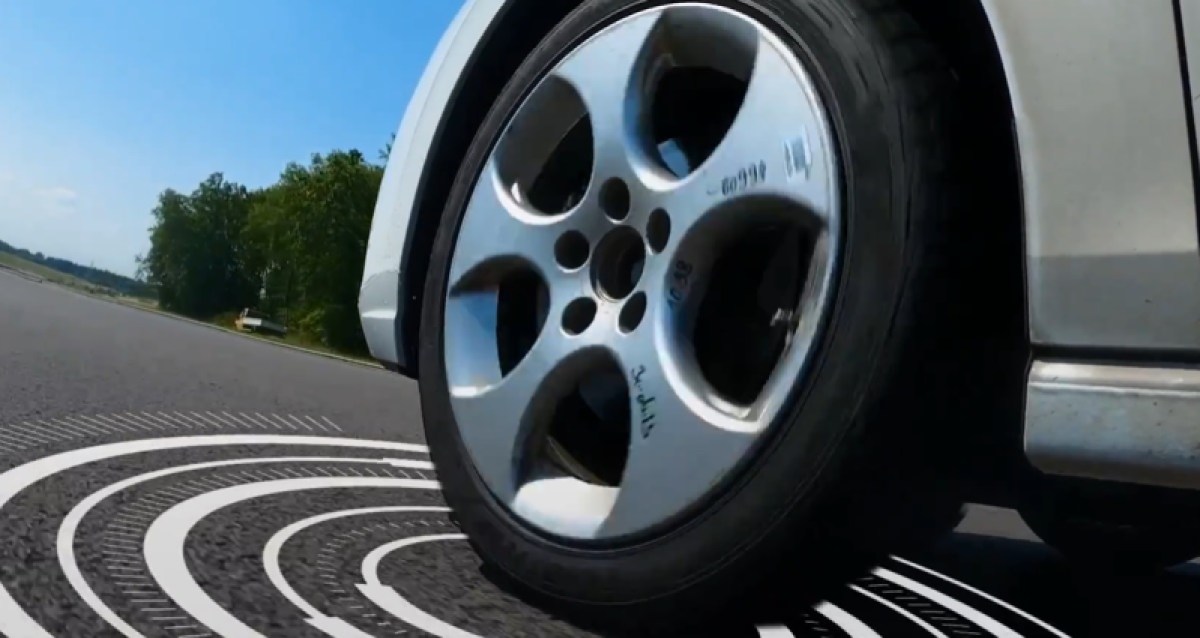
To help implement this vision for tires with the rest of the safety systems, Goodyear turned to TNO, a prominent Dutch research organization, which helped integrated the tire information into anti-lock brake systems (ABS). This collaboration has showcased a promising potential to significantly reduce braking distance, marking a crucial leap forward in enhancing road safety.
The ABS plays a pivotal role in modern vehicle safety, aiding drivers in maintaining steering control while braking. Anti-lock brakes help unlock wheels when a car is skidding.
Through rigorous collaborative research and testing on a test vehicle, Goodyear and TNO successfully exhibited that an improved ABS, empowered with tire-specific information like tire type and wear state, could potentially elevate system efficiency and curtail braking distance by 5.75 feet.
“That’s a big deal to prevent rear-end collisions,” Helsel said.
Goodyear has a simulation in its booth on what it’s like to drive while hydroplaning.
The National Highway Traffic Safety Administration reported over 1.7 million rear-end crashes in 2021, constituting nearly a third of all crashes in the United States. This pioneering integration stands to enhance stopping distance performance, offering a potential means for drivers to avert accidents and mitigate collision severity, thus contributing significantly to bolstering road safety.
Werner Happenhofer, vice president of Tire Intelligence and emobility solutions at Goodyear, expressed enthusiasm about the strides made. In a statement, he said, “Our partnership with TNO has been invaluable, unveiling possibilities to deliver greater value to our customers and champion the future of mobility. At Goodyear, we believe that leveraging tire intelligence can substantially contribute to the ambitious goal of minimizing accidents.”
The collaboration between Goodyear and TNO started in 2021, focusing on joint research and testing initiatives to evaluate and quantify ABS controller performance through intelligent tire integration.
Machteld de Kroon, managing director of unit mobility & built environment at TNO, said in a statement, “TNO is committed to enhancing vehicle safety, efficiency, and sustainability. Our collaboration with Goodyear aims to minimize every centimeter of braking distance. By optimizing tire-braking system integration, we are dedicated to reducing accidents and, ultimately, saving lives.”
TDK partnership
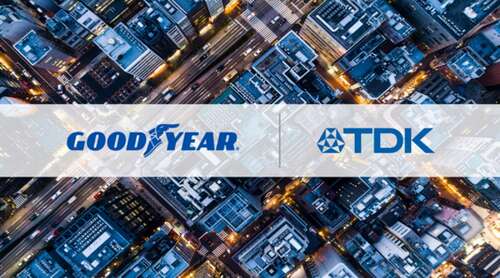
Goodyear’s new collaboration with TDK Corporation, an electronic components company, aims to accelerate adoption of integrated intelligent hardware and software into tires and vehicle ecosystems.
The partnership aims to expedite the development and incorporation of integrated intelligent hardware and software into tires and vehicle ecosystems.
The joint venture plans to introduce a robust tire sensing system to the market, synergizing TDK’s proficiency in software, sensors, and electronic components with Goodyear’s extensive expertise in tire development, intelligent solutions, and industry trends.
One of the challenges with the sensors is that if they are in a heavy detection mode, they use a lot of energy and the battery would wear out quickly in that scenario.
TDK will bring its expertise in building those custom sensors and even energy harvesting to keep these sensors charged. Right now, the sensors will last the life of the tire as long as sampling rates are controlled, Helsel said.
Jim Tran, general manager at TDK, said in a statement, “The accelerating technological advancements in the automotive industry demand real-time intelligence from the road to the vehicle. This alliance stands to expedite technology access and customer reach to the pinnacle of sensor technology available in the market. We eagerly anticipate this collaboration with Goodyear, a global front-runner in the automotive segment.”
The collaborative initiative is presently engaged in comprehensive market research and technical exploration to craft a joint solution geared toward delivering actionable insights to enhance vehicle performance, safety, and efficiency. Both TDK and Goodyear will showcase their technologies and system solutions at Central Hall (LVCC) Booth 20521 and Goodyear’s innovations at West Hall (LVCC) Booth 4917.
Deal with ZF
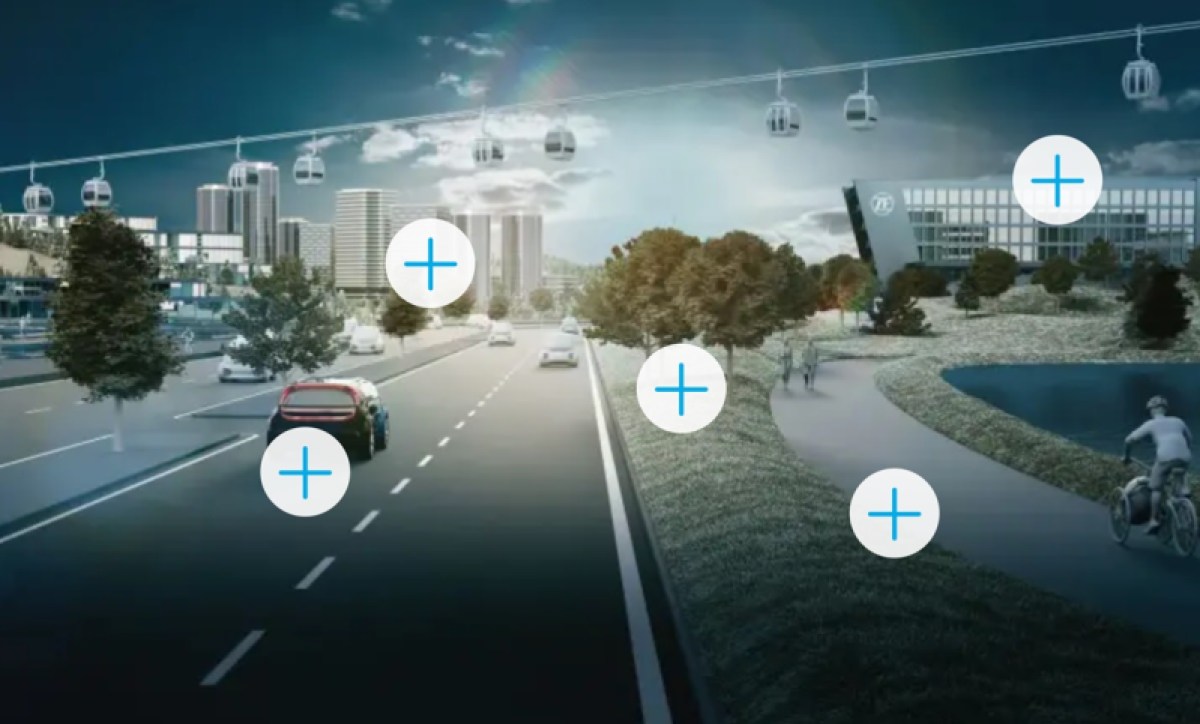
Akron, Ohio-based Goodyear also integrated Goodyear Sightline into vehicle motion control software from ZF, a seasoned automotive driveline tech company. This enables cars to reduce the risk of hydroplaning by offering predictions that enhance vehicle control.
The joint initiative amalgamates Goodyear SightLine, a suite of tire intelligence technologies, into ZF’s cubiX ecosystem, a scalable vehicle motion control software orchestrating various vehicle dynamic dimensions. This integration empowers the chassis system with comprehensive tire and road data, enhancing the driving experience by elevating comfort, control, and efficiency.
Martin Fischer, board member overseeing the ZF Chassis Solution division, expressed enthusiasm about the collaborative potential. In a statement, Fischer said, “Goodyear SightLine will deepen our connectivity to the road and expand the reach and value of cubiX by ushering in the era of software-defined vehicles. Our customers will unlock a spectrum of possibilities to tailor and optimize their solutions in vehicle motion and tire intelligence.”
Extensive research, virtual simulations, and real-world testing conducted by Goodyear and ZF have underscored the integrated solution’s potential in enhancing vehicle performance and safety. The Goodyear SightLine solution demonstrates a capacity to detect partial hydroplaning early, reducing the risk by providing optimal speed recommendations for enhanced vehicle control.
Furthermore, in the event of heightened hydroplaning severity detection, cubiX software equipped with tire intelligence data can instruct chassis actuators to execute corrective measures, stabilizing the vehicle.
Tires can also tell you something about road conditions. If the car could see 100 meters ahead and figure out that there is a good chance of hydroplaning on the path, that’s good intelligence for the driver. If that prediction becomes too likely to happen, then the cubiX system will take control of the car and its speed.
Gatik partnership
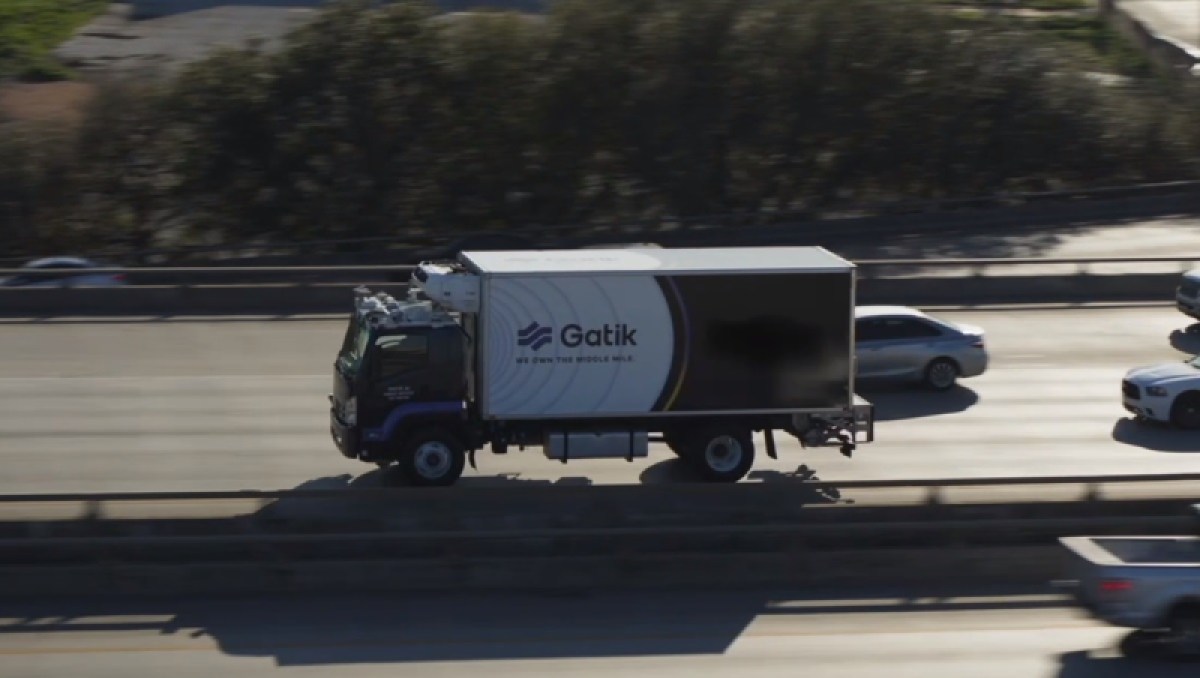
And Goodyear also announced the first integration of tire intelligence into an autonomous driving system, in partnership with Gatik, a leader in autonomous middle mile logistics.
Gatik provides safe, reliable and efficient delivery of goods for the nation’s largest grocers, retailers, distributors, e-commerce platforms and CPG companies, including Kroger, Walmart, Loblaw and Tyson Foods and more.
Gatik works with more than 10 Fortune 500 companies. Gatik’s focus on fixed, repeatable routes enables quicker, safer and scalable autonomy deployments. Gatik aims to achieve Freight-Only operations at a significant scale in 2024 and 2025, deploying autonomous trucks without humans onboard.
In 2021, the company made history with the first fully driverless commercial deliveries on the middle mile with Walmart and later executed a fully driverless deployment for Loblaw, Canada’s largest retailer.
Helsel said the company is also focused on work around sustainable materials for tires. But that’s probably a topic for another show.
The state of tire intelligence
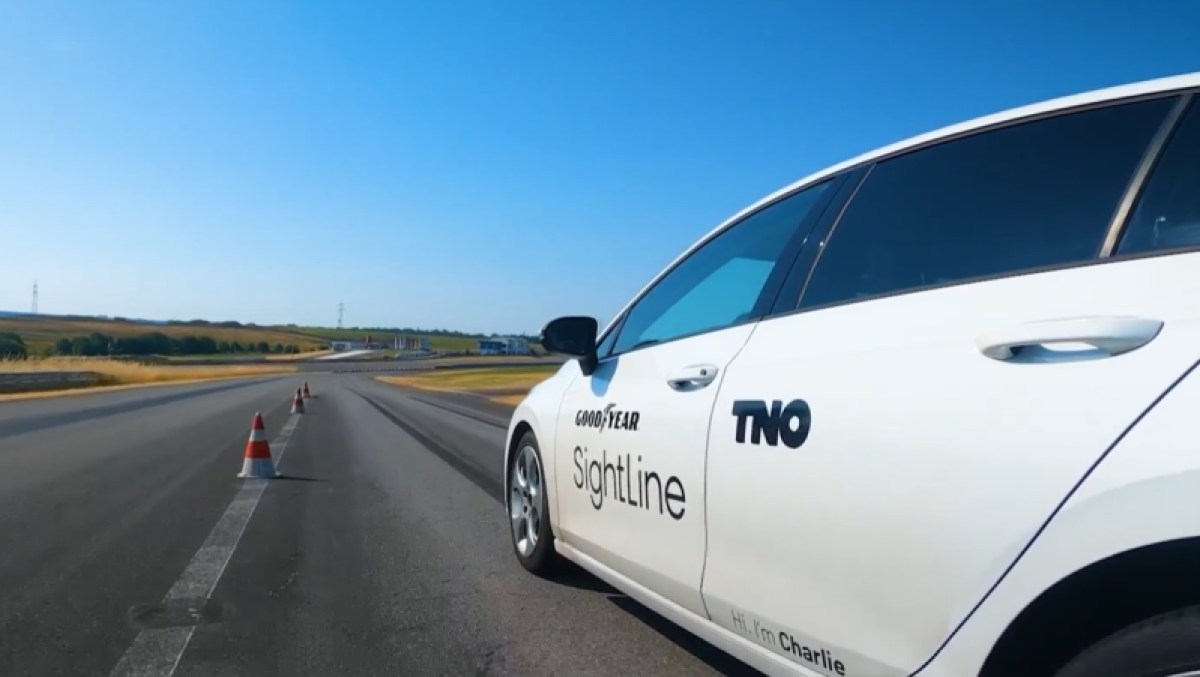
Because tires are in touch with the road, they’re a source of intelligence. That can help reduce downtime, cut costs and improve safety. When a truck pulls into a yard, it’s good to know that someone should look at the right front tire before it goes back out, Helsel said.
Other companies are instrumenting their previously dumb gear and making it smart via connectivity and sensors — an effort dubbed the internet of things. Goodyear is also experimenting with tires as a service, which is another model borrowed from tech companies.
“What we’re really focused on here is much more that safety and performance aspect,” Helsel said. “And how we would integrate these solutions into new vehicle platforms or autonomous driving systems.”
The non-tech companies at CES 2024
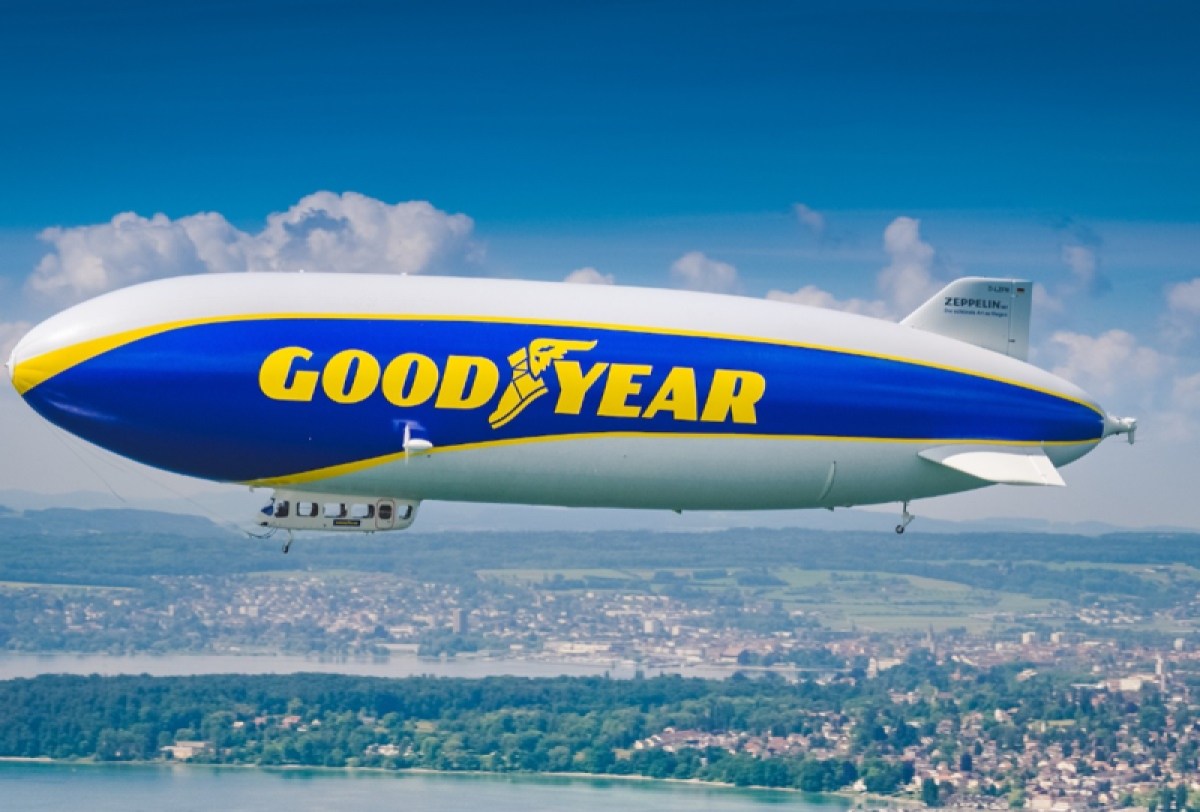
What I enjoyed about the interview is that it reminded about how tech is fading into the woodwork and becoming part of every product and company, even the ones that you think of as non-tech companies.
My favorite CES talk about tech from non-tech companies was a few years ago, when Arnold Donald — the CEO of the world’s largest cruise company, Carnival Cruises — unveiled the Ocean Medallion wearable. That was interesting because it was an example of how technology was infiltrating a non-tech business, where the technology faded into the woodwork and the woodwork itself got smart. Carnival is now outfitting its 100-plus cruise ships with the technology.
This year, non-tech companies like Walmart and L’Oreal are giving keynote talks.
Helsel said that Goodyear did not have a lot of software programmers or AI experts on hand when it started the journey. At its core, the company is a materials company, and it has a lot of those experts. Helsel joined the company 25 years ago to bring those skills into the company. The company partners to get some of that expertise, but it has also learned a lot itself and it has an office of 50 people in San Francisco, the heart of the tech industry.
“The way I think about it, tech is everywhere,” Helsel said.
Amen to that. What about flying cars? Goodyear isn’t doing them yet, but it will be interested as long as those things have tires, Helsel said. As for taking a ride on the Goodyear Blimp, Helsel said it is more like floating on a boat than it is flying.
GamesBeat’s creed when covering the game industry is “where passion meets business.” What does this mean? We want to tell you how the news matters to you — not just as a decision-maker at a game studio, but also as a fan of games. Whether you read our articles, listen to our podcasts, or watch our videos, GamesBeat will help you learn about the industry and enjoy engaging with it. Discover our Briefings.

